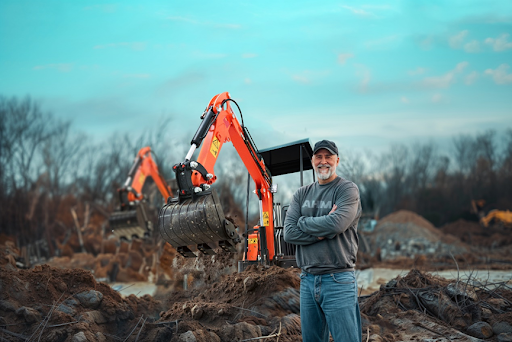Mini excavators have become indispensable tools across construction, landscaping, and utility projects. Their compact size allows them to maneuver in tight spaces while still delivering powerful digging capabilities. But a key factor that often determines how well these machines perform is their engine design. In this blog, we’ll explore how the design of a mini excavator’s engine directly impacts its performance, efficiency, and overall effectiveness on the job.
Key Components of Mini Excavator Engines
At the heart of every mini excavator is its engine, typically powered by diesel due to its durability and fuel economy. The engine’s displacement and horsepower play a critical role in defining the machine’s strength and speed. Some models also feature turbochargers, which boost power output by forcing more air into the combustion chamber.
Cooling systems are equally vital, preventing overheating during extended operations. Modern engines also incorporate advanced emissions controls to meet environmental regulations, balancing performance with eco-friendly operation.
Engine Design Features That Influence Performance
One of the most important factors in engine design is the power-to-weight ratio. A compact yet powerful engine ensures the mini excavator remains agile without sacrificing strength. Efficient fuel consumption is another key consideration, allowing operators to work longer with fewer refuels.
Torque, the twisting force an engine generates, directly impacts digging power. Engines designed for high torque at low RPMs provide better control and steady force for heavy-duty excavation. Additionally, smoother and more responsive engines reduce operator fatigue and improve precision.
Impact on Operational Efficiency
Engine design affects more than just raw power—it influences how efficiently the machine runs throughout the day. Well-designed engines optimize fuel use based on workload, helping reduce operating costs. They also tend to have longer maintenance intervals, meaning less downtime on the jobsite.
Noise and vibration levels, often linked to engine construction and balancing, affect both operator comfort and compliance with noise regulations, especially in urban or residential areas.
Environmental and Regulatory Considerations
Stringent emissions standards like Tier 4 in the U.S. and Stage V in Europe require manufacturers to develop engines that limit pollutants without compromising performance. This has driven innovations such as diesel particulate filters and selective catalytic reduction systems, which clean exhaust gases effectively.
Balancing these environmental requirements with power and reliability is a challenge that has pushed engine designs toward more sophisticated technology.
Case Study: Popular Mini Excavator Engines
When selecting a mini excavator, it’s essential to consider engine specifications relative to your specific tasks. For heavy digging or continuous use, prioritize engines with higher torque and robust cooling systems to maintain performance under demanding conditions. If you’re working in environmentally sensitive areas, choose models that comply with the latest emission standards to minimize your environmental footprint. Fuel efficiency is another important factor—especially for long-term or high-frequency projects. It’s also wise to consider the engine brand’s reliability and the availability of service and parts.
Tips for Choosing a Mini Excavator Based on Engine Design
When selecting a mini excavator, it’s essential to consider engine specifications relative to your specific tasks. For heavy digging or continuous use, prioritize engines with higher torque and robust cooling systems to maintain performance under demanding conditions. If you’re working in environmentally sensitive areas, choose models that comply with the latest emission standards to minimize your environmental footprint.
Fuel efficiency is another important factor—especially for long-term or high-frequency projects. It’s also wise to consider the engine brand’s reliability and the availability of service and parts.
If you’re looking for a balanced option that delivers both power and efficiency, the AHM 13.8 HP Mini Excavator with a Kubota engine is worth considering. Its compact design, combined with Kubota’s reputation for durability and fuel economy, makes it a solid choice for tight job sites and all-terrain work. Plus, the engine’s proven performance ensures steady torque output and minimal downtime, helping you stay productive across a wide range of tasks.
Conclusion
The engine is truly the powerhouse of a mini excavator, and its design intricacies have a direct impact on how well the machine performs. From power output and fuel efficiency to noise and emissions, the right engine can make all the difference in productivity and cost-effectiveness. By understanding these engine design factors, you can make a more informed decision and choose a mini excavator that perfectly suits your needs. UtdPlug.
